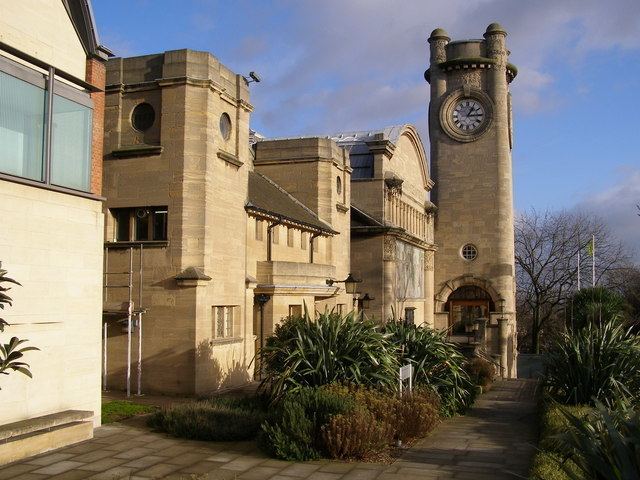Website horniman.ac.uk Founder Frederick John Horniman | Phone +44 20 8699 1872 Founded 1901 | |
 | ||
Established 1901; 116 years ago (1901) Location Forest HillLondon, SE23United Kingdom Hours Closed now Tuesday10AM–5:30PMWednesday10AM–5:30PMThursday10AM–5:30PMFriday10AM–5:30PMSaturday10AM–5:30PMSunday10AM–5:30PMMonday10AM–5:30PM London borough London Borough of Lewisham Similar Geffrye Museum, Dulwich Picture Gallery, Wellcome Collection, Sir John Soane's Museum, Grant Museum of Zoology a Profiles | ||
The horniman museum and gardens
The Horniman Museum and Gardens is a British museum in Forest Hill, London, England. Commissioned in 1898, it opened in 1901 and was designed by Charles Harrison Townsend in the Arts and Crafts style.
Contents
- The horniman museum and gardens
- Horniman museum and gardens london uk
- History
- Collections
- Gardens
- Mosaic
- Totem pole
- CUE building
- References
It is a non-departmental public body of the Department for Culture, Media and Sport and is constituted as a company and registered charity under English law.
Horniman museum and gardens london uk
History
The museum was founded in 1901 by Frederick John Horniman. Frederick had inherited his father's Horniman's Tea business, which by 1891 had become the world's biggest tea trading business.
The cash from the business allowed Horniman to indulge his lifelong passion for collecting, and which after travelling extensively had some 30,000 items in his various collections, ranging from natural history, cultural artefacts and musical instruments.
In 1911, an additional building to the west of the main building, originally containing a lecture hall and library, was donated by Frederick Horniman's son Emslie Horniman. This was also designed by Townsend. A new extension, opened in 2002, was designed by Allies and Morrison.
Collections
The Horniman specialises in anthropology, natural history and musical instruments and has a collection of 350,000 objects. The ethnography and music collections have Designated status. One of its most famous exhibits is the large collection of stuffed animals. It also has an aquarium noted for its unique layout.
Gardens
The museum is set in 16 acres (65,000 m²) of gardens, which include the following features:
Mosaic
On the London Road wall of the main building is a neoclassical mosaic mural entitled Humanity in the House of Circumstance, designed by Robert Anning Bell and assembled by a group of young women over the course of 210 days. Composed of more than 117,000 individual tesserae, it measures 10 feet by 32 feet and symbolises personal aspirations and limitations.
The three figures on the far left represent Art, Poetry and Music, standing by a doorway symbolising birth, while the armed figure represents Endurance. The two kneeling figures represent Love and Hope, while the central figure symbolises Humanity. Charity stands to the right bearing figs and wine, followed by white-haired Wisdom holding a staff, and a seated figure representing Meditation. Finally, a figure symbolising Resignation stands by the right-hand doorway, which represents death.
Totem pole
A 20-foot (6.1 m) red cedar totem pole stands outside the museum's main entrance. It was carved in 1985 as part of the American Arts Festival by Nathan Jackson, a Tlingit native Alaskan. The carvings on the pole depict figures from Alaskan legend of a girl who married a bear, with an eagle (Jackson's clan crest) at the top. The pole is one of only a handful of totem poles in the United Kingdom, others being on display at the British Museum, the National Museum of Scotland in Edinburgh, Windsor Great Park, Bushy Park, the Yorkshire Sculpture Park, and at Alsford's Wharf in Berkhamsted. There is also a totem pole in the Royal Albert Memorial museum in Exeter. It is displayed in their World Cultures galleries.
CUE building
The Horniman Museum contains the CUE (Centre for Understanding the Environment) building. This opened in 1996 and was designed by local architects Archetype using methods developed by Walter Segal. The building has a grass roof and was constructed from sustainable materials. It also incorporates passive ventilation.
